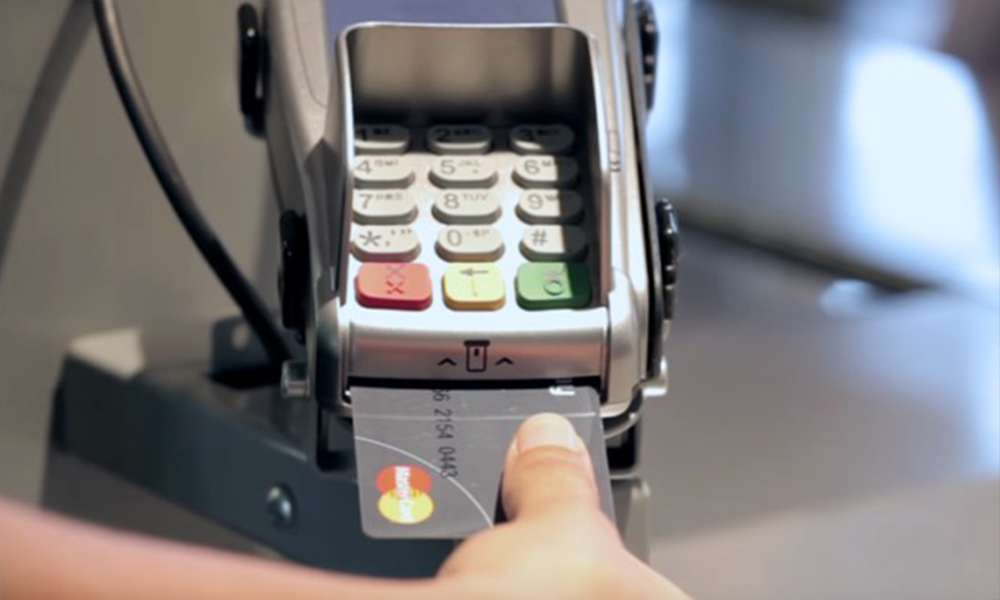Smarter technology has opened the door for easier and safer payments. Credit card provider MasterCard unveiled a card in South Africa that features a biometric fingerprint scanner.
Instead on entering a four-digit PIN, the card features a small biometric scanning area designed to verify the user’s fingerprint. Users are required to insert the card into the POS terminal and then place their finger on the biometric reader to authenticate the payment. The card works with all existing chip-and-PIN readers.
Security experts agree that fingerprint recognition is a safer and more efficient way of payment authentication than PINs. This is credited to a lower likelihood of fingerprint theft or replication. But just in case of something happening (let’s say you cut your finger), you will still have a PIN as a fall-back.
MasterCard chief of security Ajay Bhalla said the card would offer customers the “additional convenience and security” of biometrics for payments.
The ultimate payment method would be if we could combine both biometric and PIN to add an extra layer of security. Sadly this is not yet possible. So far the biometric card has been trialed at two locations in South Africa – one being in Stellenbosch. Additional trials have been scheduled in Europe and Asia over the next few months.
Global payment giants are also taking plenty of inspiration from mobile tech, with MasterCard also tapping into mobile payment. Essentially giving it’s users more accessibility to various payment options and beyond the biometric card, the company urges it’s users to pay with the Masterpass app.
The app was revealed at Mobile World Congress* earlier this year. Outside of the new biometric card, Mastercard want you to pay with its Masterpass app, at least that’s what the company told Lindsey Schutters at Mobile World Congress.
Gabriel Swanepoel, head of digital payments for Mastercard SA: “On-device security is okay for accessing certain transactions, but the Masterpass app is secured with your bank PIN. So even if your phone is compromised, you would still require a PIN to make a transaction. So it’s a little like using your bank card.The way the system is set up, it can’t be spoofed, so if there was a SIM replacement and someone got your number, it won’t authenticate and you need to re register. We link that phone number with that device to that account. And since we’ve partnered with four of the big five banks, only FNB don’t support it, we’re in a position where we can establish a standard and have a cohesive approach to the market. We’ve sorted out authentication, the only problem is communicating that. The natural evolution of Masterpass becomes our digital acceptance brand, so when the banks do introduce tokens in the market and you want to do tap-to-pay, you would still want to use it where you see the “Masterpass Accepted” sign. So you can choose between a tap and go transaction, or scanning of a QR code.”
Mastercard has future plans of combining it’s biometric card with contactless paying technology to make payment even more convenient and seamless for it’s users.
*Read more insights into the future from industry leaders at MWC in the May 2017 issue of Popular Mechanics magazine














